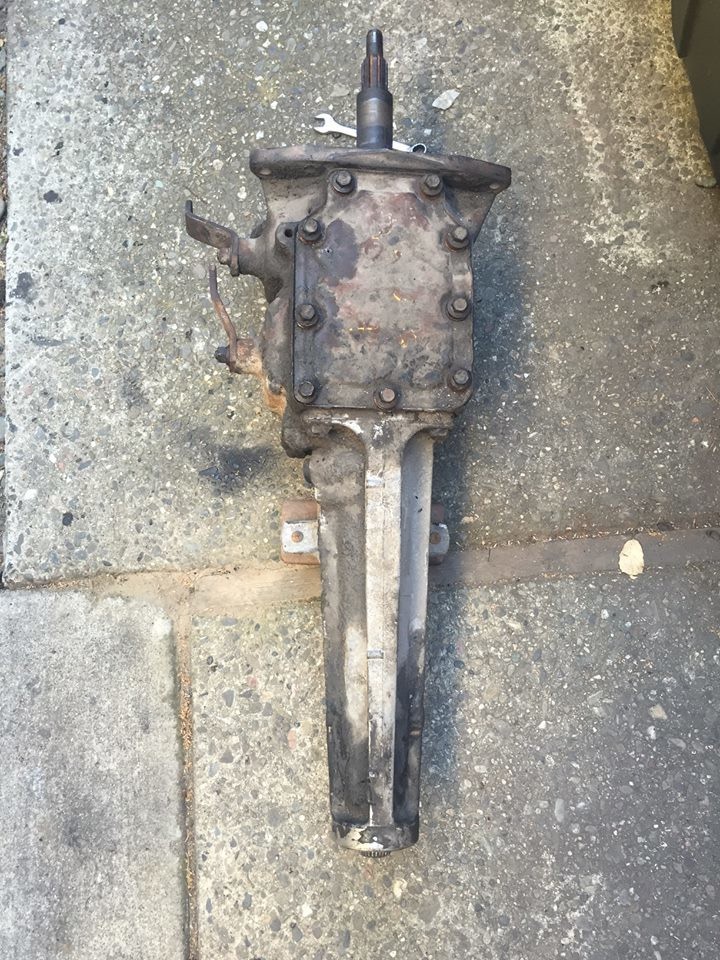
This 1969 Mustang convertible came with a rather unique drive train from the factory: a 302 V8 with a four speed manual transmission. The transmission that came with this car is arguably one of the best transmissions Ford produced, being extremely strong due to its top loading design. They weigh just shy of 100 lbs, making them hefty cast iron work horses. Most people just refer to them as a “toploader” transmission.
Our particular toploader is a wide ratio unit as opposed to a close ratio toploader. Contrary to popular belief, this is not referring to the shifting distance or throw of the shifter. The term close or wide ratio comes from the different gear sets that come with each transmission. A close ratio transmission loses very little RPM between shifts, while a wide ratio has more of a drop in RPM between gears. The wide ratio version is preferred for daily driving and drag racing while the close ratio transmission is usually desired for road racing or for cars that have higher numerical gears in the differential (3.80, 4.11 etc). Both the wide and close ratio transmissions have a final 1:1 ratio 4th gear. Toploaders were available in both a 3 speed and 4 speed version. From the outside, they look almost exactly the same. The easiest way to tell is to count the top cover bolts: 10 for the 4 speed, 9 for the 3 speed.

Toploaders can be built up with larger input shafts and heavier duty components, making them darn near bullet proof. Ours has a 10 spline input shaft which is common for small block Ford applications.
The main reason we pulled the transmission is due to how much it leaks! Every seal on this transmission has been compromised in one way or another, making a huge mess everywhere we go. The transmission shifted okay, but was starting to show it’s age by feeling a little notchy in first and second gear. Other than that, for a completely original transmission, it was doing pretty well!
Another issue we had was an awful groan coming from the bell housing when realeasing the clutch along with some clutch chatter. The chatter was getting worse and worse, making it a good time to pull the transmission. Pulling a toploader is relatively easy. Removal begins with unplugging the speedometer gear cable from the transmission and getting it out of the way. The shifter is then unbolted and pulled out from the bottom of the car along with it’s accompanying linkages. We recommend taking a picture of how the linkage works for future reference.
We drained the oil before pulling the driveshaft to avoid making a mess; be careful not to lose the U joint end caps or any of the needle bearings! A latex glove was stretched over the tail housing in order to seal it up and prevent anymore gear oil from spilling out.
The transmission cross member bolts are next, There are two on each side that attach it to the frame and two in the center that attach the transmission mount the the cross member. Do not remove the cross member to frame bolts yet, just the nuts. Place a jack under the transmission and lift the weight off of the cross member in order to remove it. Once the transmission is fully unbolted, wiggly it out from the bell housing while supporting it with the floor jack. Lower it down and slide it out.
If you were careful, you didn’t drop the transmission on the floor or on any appendages (Foot, fingers, maybe face). As with any job on a car, do it with caution. Take as many safety precautions as possible and have a friend with you in case anything goes awry. Our transmission came out with no problems and is ready to be dropped off for a rebuild.
After pulling the transmission, we moved over to the bell housing. We shined a light inside the bell housing and were shocked to find it caked with oil and clutch debris. This indicated that our clutch is definitely done for. Once oil reaches the clutch and contaminates it, there’s not much one can do to fix it other than replacing it completely. Once the clutch was removed, we found the flywheel to be in bad shape as well. Both will be replaced with fresh, new units.